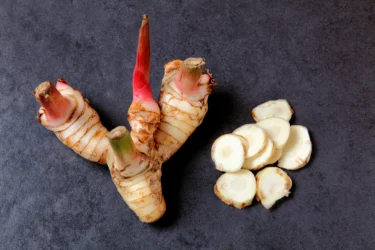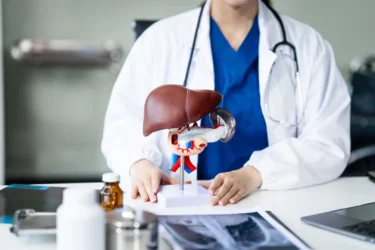Galangal: Uses, Benefits, Side Effects and More!
By Dr Ashok Pal +2 more

Get,

to manage your symptom
Get your,


4 Cr+ families
benefitted

OTP sent to 9988776655



You’ve successfully subscribed to receive
doctor-approved tips on
Whatsapp

Get ready to feel your best.

Hi There,
Download the PharmEasy App now!!


Register to Avail the Offer
Send OTPBy continuing, you agree with our Privacy Policy and Terms and Conditions

Hi There,
Sign up on PharmEasy now!!
Trusted by 4 crore+ families

OTP sent to 9988776655



You have unlocked 25% off on medicines




Code: NU25
By Dr Ashok Pal +2 more
Table of Contents
Galangal, scientifically known as Alpinia galanga, is a herbal plant. It belongs to the Zingiberaceae family. It is widely cultivated in many countries such as China, Indonesia, India, and Sri Lanka. It grows well in hot temperatures and abundant sunlight. However, it grows equally well in bushes, jungles, and open areas. It grows up to 3.5 cm tall and has underground roots. Depending on the species, these underground roots, also known as rhizomes, may be reddish-brown, whitish-yellow, orange, or pink. These rhizomes grow 2.5 to 10 cm long with an upright stem-like structure covered with leaves. The leaves are oval, pointed, bifurcated, and smooth, while the flowers are white buds on a green-coloured base. The fruits of galangal are reddish-orange with a capsule shape. Galangal may show potential uses like protecting the liver, strengthening the immune system, fighting allergies, managing digestive troubles, and many more1.
The flowers of Galangal have the following nutritional value2.

Galangal has various properties, such as:
Researchers have found that the essential oil of Galangal has significant antipsychotic and antioxidant agents. In my opinion, this property may be effective in coping with schizophrenia5.
Dr. Rajeev Singh, BAMS
Galangal has many potential uses ranging from managing stomach issues to various other conditions. Some of the potential uses of galangal are described as follows:

Studies6 have shown that galangal extracts have effectiveeffectively prevented the growth of various microbes such as S. pyogenes, K. pneumoniae, S. aureus, P. aeruginosa, and E. coli in various lab studies. Oil extracted from the root of galangal could inhibit the growth of many bacteria such as P. multocida, P. aeruginosa, E. rhusiopathiae, S. suis, E. coli, A. pyogenes and S. aureus during a lab trial. The anti-bacterial activity of the galangal root may destroy the bacterial cell membranes and lead to the clotting of the fluid inside the bacterial cell1. However, you should avoid using galangal for any infections without consulting your healthcare provider. Using herbs to treat bacterial infections without consulting a physician can worsen the situation.

The antifungal action of galangal has been observed in several studies. Many studies reported that galangal could be an alternative to conventional antifungal drugs. In lab studies, its alcohol extracts could show considerable inhibition of the growth of fungi such as C. albicans and T. longifusus1. If you are suffering from fungal infections, avoid using galangal without consulting your doctor. Using galangal or any other herb for fungal infections may worsen the situation.

Animal studies have shown that galangal could be helpful in diabetes. In laboratory studies, the alcohol extracts of galangal have been shown to reduce the blood sugar level in animals with diabetes. Galangal may help reduce low-density lipoprotein levels in the blood showing the potential role of preventing diabetic complications related to the heart3. Diabetes is a serious medical illness that requires you to adhere to doctor’s advice and treatment strictly. Avoid using galangal or any other herb to manage diabetes without consulting your doctor.

Alcohol extracts of galangal have been shown to reduce secretions from the stomach, thereby protecting the stomach cells and eventually preventing the formation of ulcers during many lab trials. The galangal root may be used to manage various stomach issues such as pain, loose motions, ulcers, and indigestion. It may also be a tonic for the digestive system and helps soothe the stomach. If you are suffering from stomach ulcers or other conditions, you need to consult a healthcare provider first. Avoid using galangal for stomach problems without consulting a physician.

These uses of galangal have been observed during lab trials. There is a need for further studies to establish the mentioned effects of the galangal on human health.
From my knowledge, some parts of the Galangal herb may aid in the management of common cold. Galangal is known for its anti-bacterial, anti-inflammatory and antioxidant properties that may help to cope with common cold7.
Dr. Siddharth Gupta, B.A.M.S, M.D (Ayu)
Galangal can be used in the following ways:
You should always consult your Ayurvedic physician before consuming galangal for regular use. They will be the best person to prescribe the correct form and dosage for your health condition. Also, do not discontinue or replace an ongoing modern medicine treatment with an ayurvedic/herbal preparation without consulting a qualified doctor.
Also Read: Pudina: Uses, Benefits, Side Effects, and more!
As far as the side effects of galangal are concerned, no significant study has been documented1. However, if you experience any adverse reactions to consuming it, immediately contact your Ayurvedic physician who has prescribed it. They will be able to treat you appropriately. You are advised to avoid using galangal as medicine without consulting with your Ayurvedic physician.
Since all parts of galangal are used in different ways in food, it is generally considered safe if it is taken in the recommended dosages. However, general precautions have to be followed while consuming galangal. Children, elderly people, pregnant women, and lactating mothers should always be careful while consuming galangal. The advice of the Ayurvedic physician who prescribed galangal to you must be strictly followed.
Also, avoid using galangal as medicine without consulting your doctor or ayurvedic physician.
Also Read: Kokum: Uses, Benefits, Side Effects And More!
Reactions of galangal with any other medicinal drugs have not been reported. However, there is no particular evidence to state that galangal is safe to use for all age groups. There are also not enough studies to confirm that galangal has no interactions with other drugs. Therefore, it is best to follow the advice of your Ayurvedic physician who has prescribed you this herb.
Also Read: Sesame Seeds: Uses Benefits, Side Effects and More!
Studies1 have shown that galangal has anti-microbial properties and is a good substitute for antibiotics. However, your Ayurvedic physician is the best person to decide whether galangal can be given instead of antibiotics to you. You are advised not to use galangal or any other herb to fight off infections without consulting your physician.
Yes. Flowers of galangal can be used as a spice in many foods2.
Galangal flowers can be used in fresh and blanched forms in different foods. They can also be boiled to form a drink2.
Yes. Flowers of galangal have a high content of dietary fibre, which can help in reducing the chances of constipation2. However, you are advised not to use any herb for medical conditions without consulting your physician. If you are suffering from constipation or any other health issue, you should reach out to your healthcare provider and get proper consultation.
No. The composition of galangal flowers is different from galangal roots. However, the flowers and galangal roots have the same properties of fighting microbes1.
Disclaimer: The information provided here is for educational/awareness purposes only and is not intended to be a substitute for medical treatment by a healthcare professional and should not be relied upon to diagnose or treat any medical condition. The reader should consult a registered medical practitioner to determine the appropriateness of the information and before consuming any medication. PharmEasy does not provide any guarantee or warranty (express or implied) regarding the accuracy, adequacy, completeness, legality, reliability or usefulness of the information; and disclaims any liability arising thereof.
Links and product recommendations in the information provided here are advertisements of third-party products available on the website. PharmEasy does not make any representation on the accuracy or suitability of such products/services. Advertisements do not influence the editorial decisions or content. The information in this blog is subject to change without notice. The authors and administrators reserve the right to modify, add, or remove content without notification. It is your responsibility to review this disclaimer regularly for any changes.
Comments

Leave your comment...
You may also like
Comments